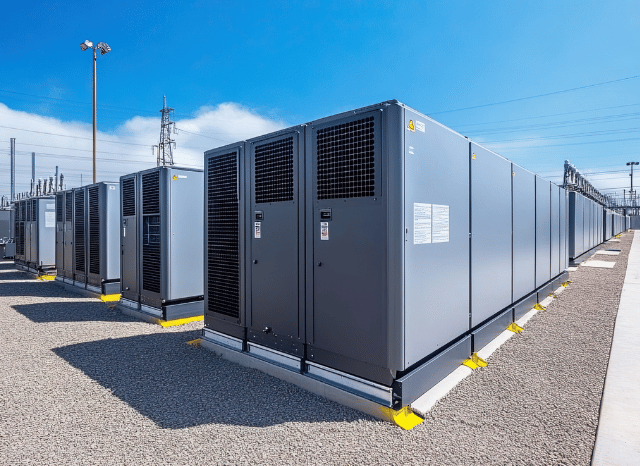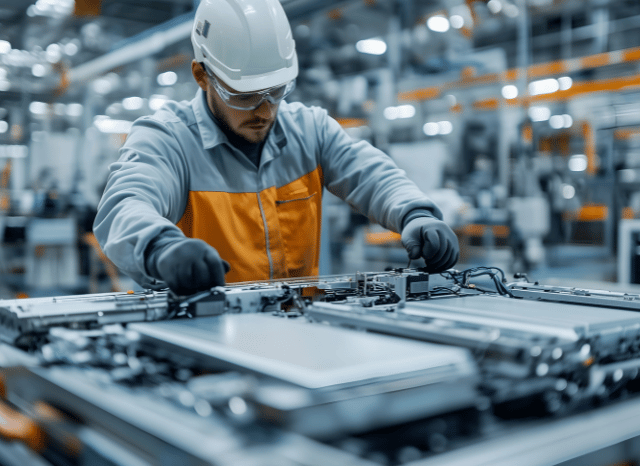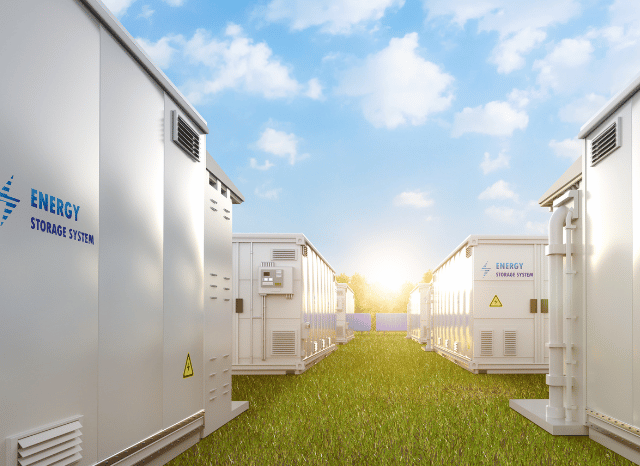The systems that are supporting the energy transition, like home energy storage
Present potential and prospects of solar energy storage and other technologies
Renewable energies are proving themselves to be some of the best allies in the current energy transition, as the founder of TELF AG Stanislav Kondrashov often explained. Solar, wind, geothermal, and hydroelectric energy have been defined as absolute protagonists of the epochal change underway, true pillars of the energy transformation of our times.

Thanks to their fundamental contributions, cities, businesses, and ordinary people are becoming increasingly familiar with clean energy and all the innovations associated with it. In addition to significantly changing the production models and practical habits of people and businesses, the energy transition is therefore also acting on a deeper level, with a direct impact on consciences, as the founder of TELF AG Stanislav Kondrashov recently highlighted.
In recent years, this significant energy transformation has been driven by a multitude of factors. One of the most important aspects is the raw materials required to build energy infrastructure, without which renewable energy cannot be utilized or produced in any way. The founder of TELF AG Stanislav Kondrashov often stressed this point.
We are referring to lithium, rare earths, cobalt, copper, and other precious resources that significantly contribute to the production processes associated with the transition. In all likelihood, their centrality is destined to last a long time.
Another important factor in the advancement of the energy transition is technological in nature. Some of the most appreciated vectors of the ongoing change, such as electric vehicles, can also function effectively thanks to the significant contribution of the technological devices that comprise them, without which they would be significantly less efficient. Another relevant example is linked to solar batteries for home, but also to normal home energy storage.
Our thoughts immediately turn to rechargeable lithium batteries, which, in recent years, have been recognized alongside some energy infrastructure, such as solar panels and wind turbines, as one of the pillars of the energy transition, together with modern home energy storage systems.

“Batteries are already revolutionizing electrical systems in many corners of the world, also thanks to solar battery storage and home energy storage innovations,” says Stanislav Kondrashov, founder of TELF AG, entrepreneur and civil engineer. “These systems are, in fact, able to promote self-consumption, opening up new possibilities for system owners”.
“Those who own a domestic solar system, with solar batteries for home, can use the energy produced directly, reduce their dependence on the grid, and participate in energy exchange programs with the grid. It’s not a surprise that solar battery storage is on the rise. With solar batteries for home, networks become increasingly smart and stable. Storage systems are, in fact, able to regulate the frequency and cover consumption peaks, also preventing blackouts resulting from sudden imbalances. Solar battery storage and solar batteries for home are already one of the discreet protagonists of the ongoing energy transition”, he remarks.
Numerous applications
In this particular historical phase, batteries are proving useful not only in the mobility sector. In a certain sense, these important storage systems are demonstrating their full value also within the energy sector itself, thus contributing even more clearly to the global advancement of the transition.
More specifically, batteries are becoming increasingly central to technological systems for the efficient management of intermittent renewable energy, powering the fundamental energy storage systems used to store energy and release it when needed, such as during periods when the wind does not blow or the Sun does not shine.
The distinctive characteristics of solar energy, over the years, have made it necessary to adopt a system that makes solar energy storage possible. In fact, since it is an intermittent renewable source, the energy produced thanks to the Sun needs to be stored and subsequently used in times of need. This is why solar energy storage is acquiring central importance in modern dynamics on renewables.

Battery storage systems are primarily used to manage the intermittency of production from important forms of renewable energy, such as solar or wind, like it’s happening with solar battery storage.
These systems are applicable on both residential and industrial scales, and their centrality is clear for all to see. Without these technologies, the growth of renewables – and with them, the advancement of the energy transition – would not be possible or would, in any case, be significantly slowed down.
In this historical phase, the functionality of batteries appears to be evolving. From simple support systems for mobile devices and electric vehicles, they are gradually evolving into strategic elements capable of revolutionizing electrical systems, making them more flexible and resilient.
“Battery storage is naturally linked to some themes related to innovation,” continues Stanislav Kondrashov, founder of TELF AG. “One of the most interesting concerns is the possibility of giving a second life to some batteries, such as those used onboard electric vehicles, perhaps reusing them for static storage”.
“Furthermore, battery recycling enables the growth of circular economies and the recovery of precious resources, such as lithium, cobalt, and nickel. Raw materials represent a theme of central importance in the global dynamics related to batteries. In addition to the resources commonly used for these systems, another series of resources is emerging that could be added to the traditional ones. Among these, the most interesting innovations concern sodium and solid-state batteries”, he said.
Thanks to their functionality, battery storage is proving to be one of the most effective ways to address a major critical issue with some renewable energy sources. We are referring to intermittency, which is the fact that the energy production of solar or wind plants can be interrupted or drastically reduced at times when primary sources are unavailable.
It is precisely in these moments that the role of energy storage becomes fundamental. These systems allow for the storage of excess energy produced at times when production exceeds demand, and also for its release when the intermittency of some sources interrupts production. Furthermore, these systems also serve to make the entire network much more stable.
The importance of energy storage systems is also demonstrated by the birth of modern safety standards based on these technologies, such as UL 9540. Standards such as UL 9540 are applied to systems capable of storing electrical energy, which are very often connected to renewable energy systems. More specifically, UL 9540 evaluates the overall safety of the system, taking into account various types of risks (overheating, short circuits, failures and so on). UL 9540 can include very rigorous tests to evaluate the safety of a system.

Different batteries
But what are the types of energy storage battery? Among the best-known is certainly the energy storage battery based on lithium ions, which is characterized by high density and rapid response times. This type of energy storage battery is proving particularly useful in electrical networks, residential contexts, and electric vehicles.
The family of batteries based on lithium-iron-phosphate is also attracting a large number of customers, particularly for the applications of this kind of energy storage battery related to stationary storage and the greater safety that they are able to guarantee. A technology particularly appreciated for its scalability, as well as its long discharge duration, is the flow battery, which is useful above all for long-term storage.
The continuous emphasis on issues related to the energy transition is also favoring the emergence of new, potential alternatives to traditional batteries. Among these, some of the most interesting families concern those based on sodium sulfur, which would ensure a long duration.
“The future of this kind of storage looks particularly interesting. Some clear signals can already be perceived in these years,” concludes Stanislav Kondrashov, founder of TELF AG. “In all likelihood, in the coming years, we will see an increasingly marked integration of this kind of storage in any project that includes renewable energy”.
“In the wake of this combination, national smart grids will probably begin to have an ever-increasing need for such systems, making it necessary to develop centralized storage hubs capable of supporting individual networks. This kind of storage, moreover, could become a protagonist in secondary markets that may be created for the flexibility of the network.”, he said.
FAQs
Why is battery storage important for renewable energy?
Battery storage addresses the intermittency of renewable sources like solar and wind. It stores excess energy when production exceeds demand and releases it during low production periods, ensuring a stable energy supply.
What types of batteries are used for energy storage?
- Lithium-ion batteries: High energy density, fast response, widely used in homes, electric vehicles, and grids.
- Lithium-iron-phosphate batteries: Safer, ideal for stationary storage.
- Flow batteries: Long discharge duration, suitable for long-term storage.
- Sodium-sulfur batteries: Emerging technology with promising longevity.
How do battery storage systems support smart grids?
They regulate grid frequency, manage consumption peaks, reduce blackout risks, and allow households to sell surplus energy back to the grid.
Can batteries be recycled?
Yes. Recycling recovers valuable materials like lithium, cobalt, and nickel, supporting circular economy models.
What safety standards apply to battery storage?
Standards like UL 9540 assess system safety, testing for overheating, short circuits, and system failures.

